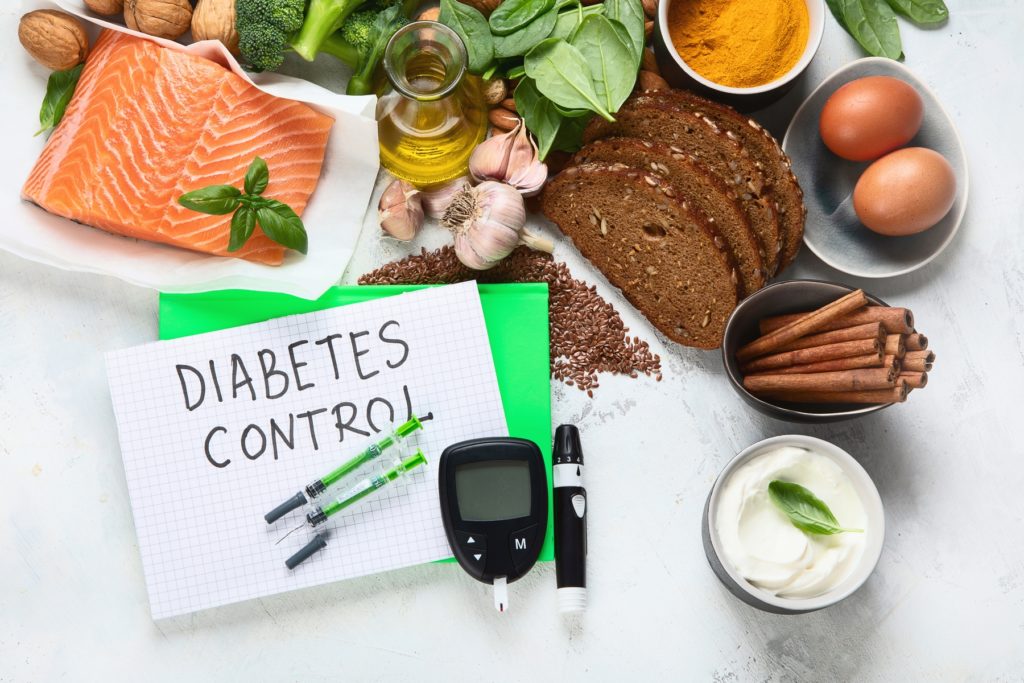
Understanding Diabetes

It’s a disease that affects millions of Americans, so it’s likely that you know someone with diabetes. Diabetes is a serious condition that causes higher than normal blood sugar levels. It is estimated that 30 million Americans have diabetes, including as many as 7 million who have the disease but have not yet been diagnosed.
This fact is just one of many reasons the American Diabetes Association (ADA) recognizes November as National Diabetes Month, when the community comes together to raise awareness. For those of us at risk, it’s a time to get educated, find resources and make sure all those around us are aware of their risk, too.
Diabetes is a serious condition which causes higher than normal blood sugar levels. The hormone insulin moves sugar from the blood into your cells to be stored or used for energy. With diabetes, your body either doesn’t make enough insulin or can’t effectively use the insulin it does make. Type 1 and type 2 are the major forms of the disease, but there are also other kinds, such as gestational diabetes, which occurs during pregnancy, as well as other forms.
Diabetes and COVID-19
Those living with poorly managed diabetes are at higher risk of experiencing serious complications if they contract COVID-19. A new government study by the U.S. Centers for Disease Control & Prevention shows that nearly 40 percent of people who have died with COVID-19 had diabetes. Among deaths of those under 65, half had the chronic condition. If you have diabetes, you should take extra care to follow precautions to protect against COVID-19.
Type 1 Diabetes
Diabetes affects people from all social, economic and ethnic backgrounds. According to the Diabetes Research Institute, approximately 10 percent of people who have diabetes have type 1 or insulin-dependent diabetes, the most severe form of the disease. While type 1 diabetes usually develops in children and teenagers, it can occur at any age. It is not a result of eating too many sweets or being overweight. The treatment of type 1 diabetes requires a management plan that includes insulin therapy, exercise and meal planning (carbohydrate counting), as well as emotional support. With the right support, people with type 1 diabetes can usually achieve good control of the disease. If left untreated, however, type 1 diabetes may lead to coma and death.
Type 2 Diabetes
Type 2, the most common type of diabetes, is about the body not making enough insulin and not being able to use what it makes to completely control blood sugar levels. Type 2 diabetes usually develops after the age of 35 and occurs in people who are overweight and have a sedentary lifestyle and have a family history of type 2 diabetes.
Because the onset of this type of diabetes can be slow, many people mistakenly overlook the warning signs, which can lead to all kinds of complications. Those who have undiagnosed or untreated diabetes for several years are at risk for heart disease, stroke, kidney disease, nerve pain, numbness, sexual dysfunction, non-healing wounds, dental problems, vomiting, diarrhea and depression. A treatment program including diet, exercise and weight loss will help decrease insulin resistance and, in turn, lower blood sugar levels. Managing diabetes requires constant vigilance.
Preventing Diabetes
Although there is no cure for type 2 diabetes, the good news is that if you have prediabetes, studies show it is possible for some to prevent or delay type 2 diabetes and other serious health problems. Through diet changes and weight loss, you may be able to reach and hold normal blood sugar levels without medication. According to the CDC, a small amount of weight loss means around 5 percent to 7 percent of your body weight, just 10 to 14 pounds for a 200-pound person. Regular physical activity means getting at least 150 minutes a week of brisk walking or a similar activity. That’s just 30 minutes a day, five days a week. The CDC offers a lifestyle change program to help lower the risk of developing type 2 diabetes. Now in its 10th year, this research-based program has shown that people following the program have been able to lower their risk of developing type 2 diabetes by as much as 58 percent (71 percent for those over the age of 60).
What are the most common symptoms of diabetes?
- Thirst and urination
- Fatigue
- Hunger
- Weight loss
- Delayed healing
- Blurred vision
- Numbness
- Dark patches
- Skin rashes
- Yeast and urinary tract infections
- Erectile dysfunction
If you are experiencing symptoms of diabetes, you should consult your physician immediately. People who are over the age of 35, overweight, with a family history of diabetes, or who belong to a high-risk group should be checked at least once a year to detect diabetes at its earliest stages. The Boca Grande Health Clinic is here to help. You can get a simple blood sugar test to find out if you have prediabetes. Ask your doctor if you should be tested.
More Recent Healthcare News

April, the birth month of James Parkinson, is Parkinson’s Disease Awareness Month. Parkinson’s is a degenerative syndrome that results in the gradual loss of brain circuitry involved in movement, thinking and behavior. According to the National Institutes of Health (NIH), the first clear medical description of Parkinson’s Disease as a neurological condition was written in […]

March 30th marks a special day on our calendar – Doctor’s Day! It’s a time to honor those who dedicate their lives to caring for us. At the Boca Grande Health Clinic, it’s the extraordinary team of board-certified physicians – Dr. Raymond A. James, our Medical Director; Dr. Bret Kueber, the Assistant Medical Director; and […]

Ask a Doc: Kicking Colon Cancer in the Butt
March 22, 2024According to the American Cancer Society, the lifetime risk of developing colorectal cancer is about 1 in 23 for men and 1 in 25 for women. The death rate from colorectal cancer has been dropping in older adults for several decades. Unfortunately, colorectal cancers now rank as the leading cause of cancer death in men […]

What’s on Your Plate? Tips to boost your nutrition
March 8, 2024March is the harbinger of spring and with it, the start of daylight saving time – an extra hour for healthy activities from taking in the great outdoors to growing a garden. It’s also National Nutrition Month, a time to focus on making informed food choices and developing sound eating habits. With lifestyle-related diseases like […]
